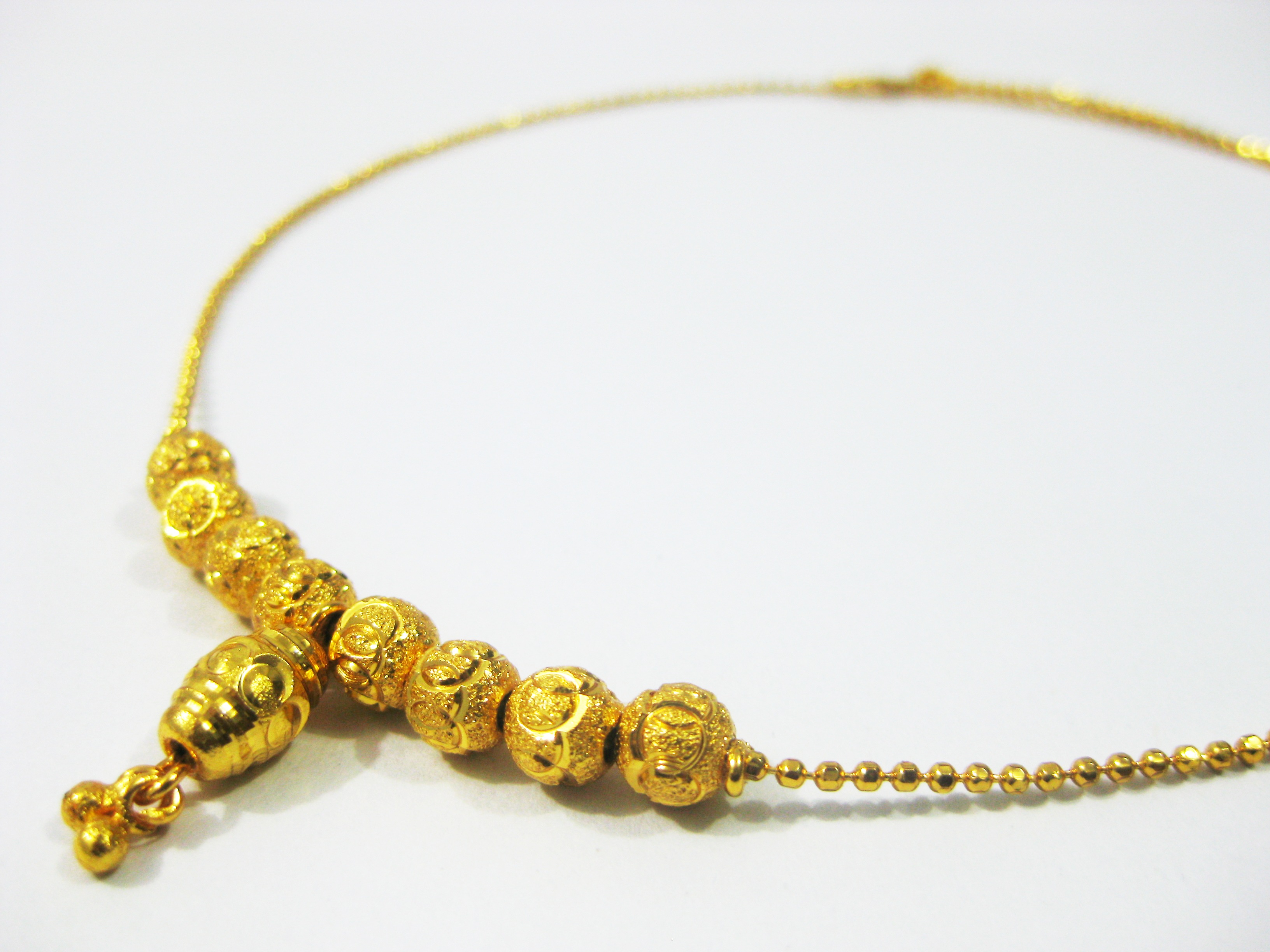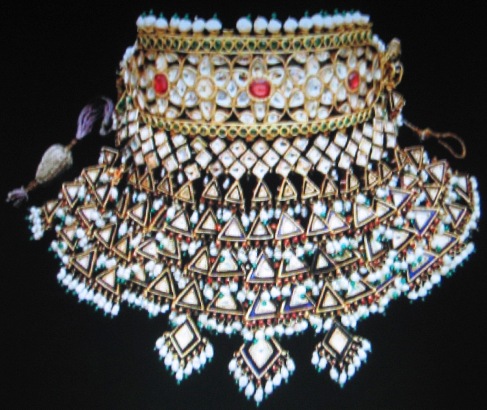Gold Jewellery Designs Biography
Source
(google.com.pk)
Gold is a metal that lures many. It gives the security against any
financial crisis, because of its easy liquidity, and is also used by women
for adorning themselves. Traditionally, gold has been considered
auspicious among Hindus and is regarded to be symbolic of Lakshmi,
the Goddess of Wealth. Gold is symbol of perfection, immortality and
prosperity; it is the substance that myths and legends are made of. It is
a favourite for making jewellery, for the reason that it is anti-rust and
has an everlasting shine.
Kancheepuram in southern India and Varanasi in northern India have
been the centre of gold jewellery making since the historic times. Gold
has been used in making of brocades and weaving. Zardozi, which was brought in India by Mughals, used gold
thread is in embroidery. An excellent craft, it is quite popular even today. Like other jewellery products, gold
jewellery is typical to the region. Design and pattern of gold jewellery differs according to the area and tradition
carried on historically.
Till date, there has been no historical evidence to shows that Indian women did not wear any gold jewellery
anytime. Earrings, nose rings, bracelets, armlets etc., all have been a part and parcel of the women in India,
historically. Indian gold jewellery got its international touch during Mughal period. The Mughals inspired Indian
craftsmen to learn intricacies and nuances of jewellery making. During this period enameling, embedding stones
in gold and filigree work attained great popularity.
During Mughal period, the gold jewellery of the hands and feet was extremely ornate. The reason was that
women wore veils and the only exposed parts of their body were their hands and feet. Some major gold jewellery
of India includes necklaces, nose rings, earrings, hair clips, waistbands or toe rings etc, all popular among Indian
women. Besides the fact that gold jewellery lures Indian women most for obvious reasons, gold is believed to
welcome Lakshmi. During Diwali, Goddess Lakshmi is worshiped and gold is almost invariably bought.
Jewels were always part of human culture. Even from the times when humans first started using clothes and tools some 100.000 years ago, jewels were produced from any kind of materials that were available - stones, animal skins, feathers, plants, bones, shells, wood, and natural made semi-precious materials such as obsidian. As the time went on, advancing technology enabled artisans to start taming metals and precious gems into works of art that influenced entire cultures and many modern jewelry styles. However, even with all advancements of metallurgy and gem processing, the purpose of wearing jewelry always remained the same - they enabled wearer to express himself non-verbally, showcase wealth, rank, political and religious affiliation or affections toward someone. This enabled jewelry to become timeless and a target for constant development and refinement.
Development of early jewelry can be roughly divided across three ancient civilizations - Egypt, India and China. Egypt and Mesopotamia set standards in metallurgy, gem collecting, and glass manufacture. Their several thousand year long tradition of jewelry production laid a solid foundation for all European civilizations that came after them, and their unique style affected fashion trends even four thousand years later.
India however managed to develop such a connection to jewelry that it became integral part of their daily life and religion. Since they were the first who managed to conquer the art of gold gathering and processing, they develop art of jewel making much earlier than anyone in their environment. This made them one of the most sought destinations for trade, which eventually became driving force for the incredible expansion of European civilization during the Age of Discovery. On the far side of the world, China managed to become driving force in developing of arts and their influence slowly spread their unique style across entire Asia. Chinese style that is focused on scenes of nature, animals and dragons is today still in high popularity, and continues to be developed with each passing year.
Gold Jewellery Designs Indian Jewelry Sets Bangles Rings Box Designs Band Designs Lates Gold Earnings Designs Ads Photos Images Pics


Gold Jewellery Designs Indian Jewelry Sets Bangles Rings Box Designs Band Designs Lates Gold Earnings Designs Ads Photos Images Pics


Gold Jewellery Designs Indian Jewelry Sets Bangles Rings Box Designs Band Designs Lates Gold Earnings Designs Ads Photos Images Pics


Gold Jewellery Designs Indian Jewelry Sets Bangles Rings Box Designs Band Designs Lates Gold Earnings Designs Ads Photos Images Pics
.jpg)
.jpg)
Gold Jewellery Designs Indian Jewelry Sets Bangles Rings Box Designs Band Designs Lates Gold Earnings Designs Ads Photos Images Pics


Gold Jewellery Designs Indian Jewelry Sets Bangles Rings Box Designs Band Designs Lates Gold Earnings Designs Ads Photos Images Pics


Gold Jewellery Designs Indian Jewelry Sets Bangles Rings Box Designs Band Designs Lates Gold Earnings Designs Ads Photos Images Pics


Gold Jewellery Designs Indian Jewelry Sets Bangles Rings Box Designs Band Designs Lates Gold Earnings Designs Ads Photos Images Pics


Gold Jewellery Designs Indian Jewelry Sets Bangles Rings Box Designs Band Designs Lates Gold Earnings Designs Ads Photos Images Pics


Gold Jewellery Designs Indian Jewelry Sets Bangles Rings Box Designs Band Designs Lates Gold Earnings Designs Ads Photos Images Pics


No comments:
Post a Comment